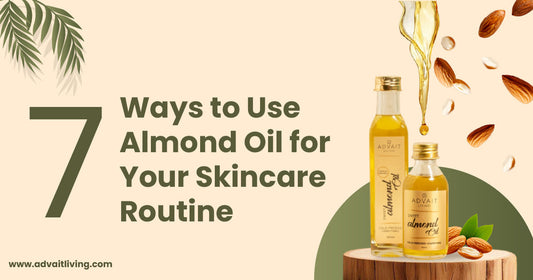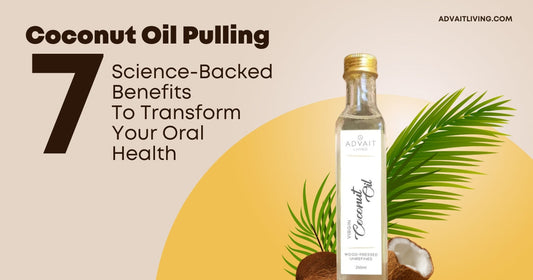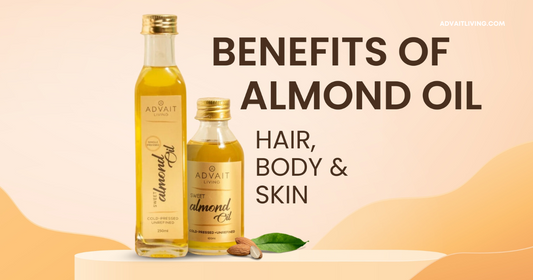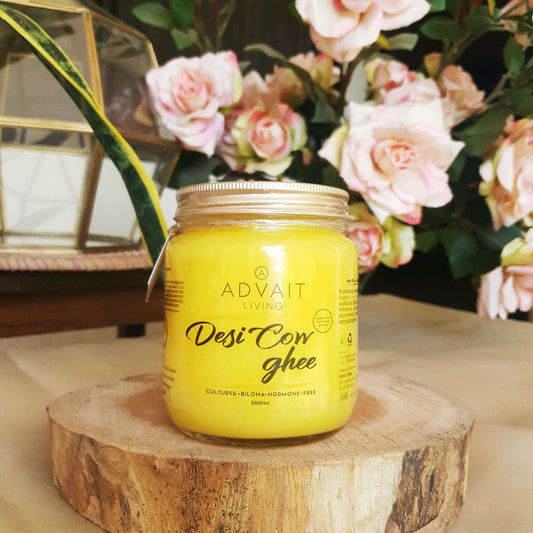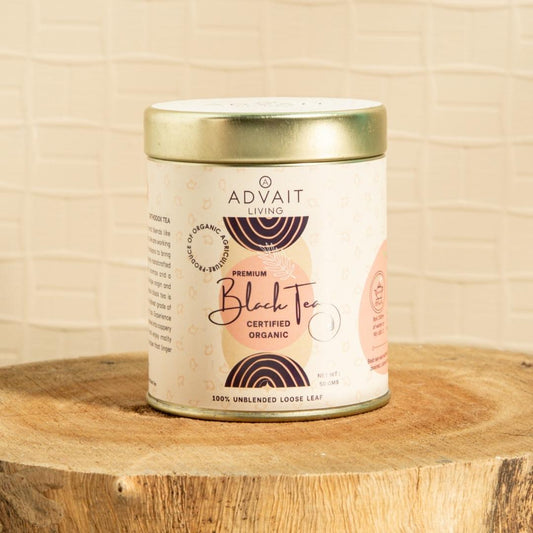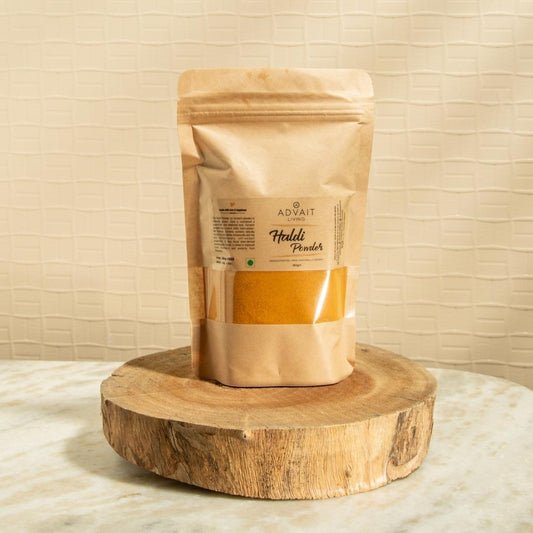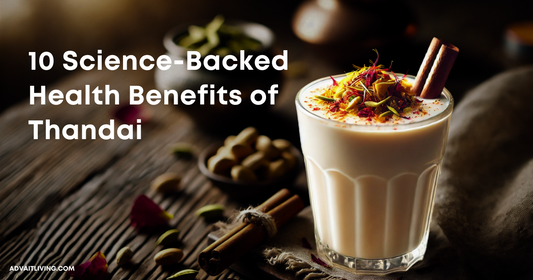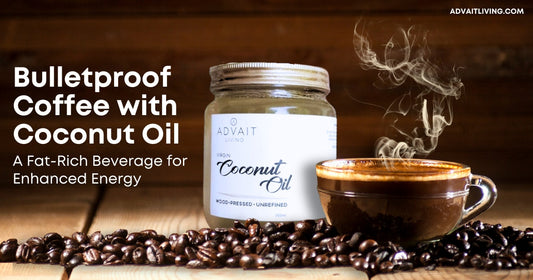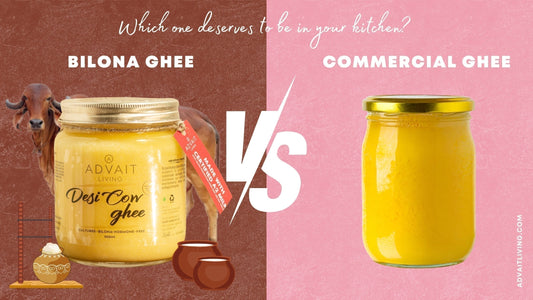When we first built Advait Living, I wasn’t just thinking about farming or food products. I was thinking about us, our bodies, our families, our children and what happens when the food on our plate is no longer the food that grew in the soil. Somewhere between the farm and the supermarket shelf, our food gets stripped, altered, and dressed up in labels that sound healthy but quietly erode our metabolic health.
For me, this realisation was not academic. It came from personal experience of seeing how my own energy, skin, and digestion changed when I shifted away from industrially processed foods and returned to what I now call “real food.” In this piece, I want to share how processing breaks down food and, in turn, breaks us down.
What We Lose in Processing…
Think of a plump olive, hanging on a tree in Mediterranean sunshine. Now imagine what it takes to get that olive’s oil into your kitchen. Traditionally, olives are pressed, cold and slow, releasing their rich, golden oil while preserving the antioxidants and delicate fatty acids nature designed. But most supermarket oils today are made differently. Industrial processors often use hexane solvents and high heat to strip out the oil quickly and efficiently. What’s left is a lifeless liquid that is devoid of polyphenols, oxidised in the process, and sometimes even deodorised to hide its rancidity.
When I first learned this, I felt betrayed. I had trusted the word “olive oil” to mean nourishment, but the structure had already been destroyed before I even opened the bottle. This story isn’t about olive oil alone; it’s the story of almost all cooking oils and then even most packaged foods. All cooking oils lose antioxidants, grains lose their fibre, flours are bleached, fruits are juiced into sugar water, and shelf-stable snacks are puffed, fried, or baked until the nutrients are gone.
Nothing is offered without a multitude of ingredients so a simple curd becomes greek yogurt with 20-odd ingredients to make it tasty, thick, structured to seduce our senses and commoditised. In contrast, home-made curd is often watery and is made only with 2 ingredients - milk & starter culture!
Every time processing alters the natural structure of food, it changes the way our body receives it. Our microbiome, those trillions of bacteria that protect our immunity, digestion, and even mood, can’t recognise these altered foods. They thrive on fibre and natural complexity, but instead they are starved or crowded by additives, sugars, and preservatives.
The Triple Trap: Sugar, Fat, Salt
One of the most cunning tricks of the food industry is what I call the triple trap, the irresistible combination of sugar, fat, and salt. When these three are engineered into a product in just the right proportions, our brain lights up with reward signals. You know that feeling: just one chip quickly becomes the whole packet.
This isn’t a failure of willpower; it’s neuroscience. Highly processed foods are designed to bypass our satiety signals. They don’t fill us the way real meals do, and they keep us reaching for more. When I was sampling products in the early days of Advait Living, I remember tasting a store-bought “healthy” snack that claimed to be baked, not fried. After the first bite, I knew I wouldn’t be able to stop if I kept going. It had that exact engineered mix of crunch, salt, and hidden sweeteners. That day, I decided that anything we created would have to honour satiety, not addiction.
Hidden Sugars and 56 Names for Sweet
If there is one area where the food industry truly plays hide-and-seek, it is sugar. Flip over any packet in your pantry and you’ll likely find not just “sugar” but maltose, dextrose, high-fructose corn syrup, rice syrup, evaporated cane juice, fruit concentrate and the list goes on. In fact, there are over fifty different names used to disguise sugar on labels.
I remember standing in a supermarket aisle once, holding a children’s yoghurt drink marketed as “low-fat and healthy.” The label had three different forms of sugar listed, and none of them was called just “sugar.” The parents buying it would never know they were giving their child the equivalent of dessert in disguise.
My personal rule of thumb? If sugar appears in any form in the first three ingredients, it’s not coming home with me. Better yet, I try to buy foods that don’t even have an ingredient label, like fresh vegetables, grains from trusted mills, and ghee from traditional churns. Real food doesn’t need marketing language; it speaks for itself.
“Low-Fat” and “Light” Can Be Worse
One of the biggest myths we have inherited is that fat is the villain. For decades, the industry churned out “low-fat” and “light” versions of everything from milk & yoghurt to biscuits & dressings. But here’s the catch: when you remove fat, food loses taste and texture. To compensate, manufacturers pump in sugar, starch, or artificial thickeners.
The result? Products that spike our blood sugar, starve us of satiety, and trick us into thinking we’re eating healthy. No wonder our metabolic health has taken such a hit. In truth, good fats like those in ghee, nuts, or cold-pressed oils are protective. They stabilise blood sugar, support hormones, and keep us full. It’s the industrial tinkering, not the fat itself, that causes harm.
Coming Back to Real Food!
When I reflect on all this, I return to the soil. Food is meant to be alive, complex, and nourishing. Each step of industrial processing takes it further away from that origin. If we want to protect our metabolic health, the answer is not in the next fad diet or superfood. It’s going back to basics:
- Choosing foods that look close to how they grew.
- Reading labels with utmost awareness and research.
- Refusing to be fooled by “light” or “low-fat” claims.
- Trusting our own satiety and taste, not engineered cravings.
I founded Advait Living with this simple conviction: food should serve our bodies, not break them down. And the more I learn, the clearer it becomes that when we reclaim real, minimally processed food, we reclaim not just our metabolic health, but our freedom.
Meenakshi Kishore,
Advait Living Farms



